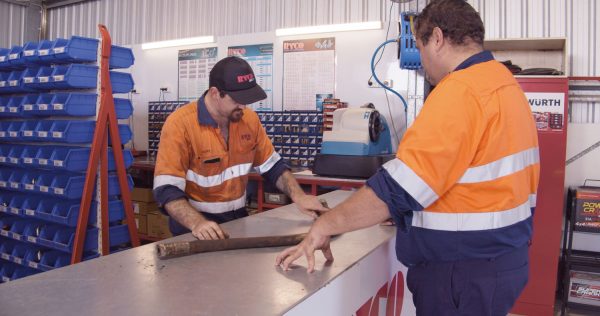If you’re in the market for hydraulic hoses, it’s important to know what you’re looking for. There are a few things to consider before making your purchase, including the type of hose, the size, and the pressure rating. This blog post will discuss all of these factors and more. We’ll also provide some tips on how to choose the right hydraulic hose for your needs.
What are hydraulic hoses?
Hydraulic hoses are used to transfer fluid between two points. They are often used in construction and industrial applications where a high-pressure system is required. Hydraulic hoses are made from a variety of materials, including synthetic rubber, metal, and textile. The most common type of hydraulic hose is the spiral-wound hose, made from a steel wire spiralled around a rubber core.
What are the different types of hydraulic hoses?
There are three main types of hydraulic hoses: low pressure, medium pressure, and high pressure. Low-pressure hoses have a working pressure of up to 1,500 PSI, while high-pressure hoses can handle up to 10,000 PSI. Medium-pressure hoses fall somewhere in between, with a working pressure of up to 5,000 PSI.
What are the different sizes of hydraulic hoses?
- Braided hose: This type of hose is made from a single piece of metal, usually stainless steel. It’s then braided with another layer of metal, usually copper. This construction makes braided hoses extremely strong and durable. They’re often used in high-pressure applications.
- Spiral-wound hose: As the name suggests, this type of hose is made from a spiral-wound steel wire. It’s then covered with synthetic rubber or textile. Spiral-wound hoses are often used in medium to high-pressure applications.
- Low-pressure hose: This type of hose has a working pressure of up to 1,500 PSI. It’s often used in domestic and industrial applications where a low-pressure system is required.
- Medium pressure hose: This type of hose has a working pressure of up to 5,000 PSI. It’s often used in construction and industrial applications where a medium-pressure system is required.
- High-pressure hose: This type of hose has a working pressure of up to 10,000 PSI. It’s often used in high-pressure applications, such as hydraulic tools and equipment.
- Thermoplastic hose: This type of hose is made from a variety of synthetic materials, including polyester and nylon. Thermoplastic hoses are often used in low to medium-pressure applications.

What is the difference between a hydraulic hose and a regular hose?
A hydraulic hose is designed to transfer fluid under high pressure, while a regular hose is not. Hydraulic hoses are also made from different materials than regular hoses, as they need to be able to withstand high pressures without bursting.
How to choose the right hose:
Now that you know the different types and sizes of hydraulic hoses, it’s time to choose the right one for your needs. Here are a few things to consider:
The type of hose: You should first decide what type of hose you need based on the application. For example, if you’re using a hydraulic jack, you’ll need a high-pressure hose.
The size of the hose: The next thing to consider is the size of the hose. Hoses are available in a variety of diameters,
The pressure rating: Finally, you’ll need to choose a hose with the right pressure rating. This is determined by the maximum working pressure of the hose. For example, if you’re using a hydraulic jack that has a maximum working pressure of 10,000 PSI, you’ll need a high-pressure hose with a similar pressure rating.
Who will benefit from using hydraulic hoses?
Hydraulic hoses are used in a variety of applications, including construction, industrial, and domestic. They’re often used in high-pressure systems, such as hydraulic jacks and equipment. Hydraulic hoses are available in a variety of sizes and pressure ratings to suit your needs.
How to care for your hydraulic hoses:
Hydraulic hoses are strong and durable, but they still require some care to ensure they last as long as possible. Here are a few tips:
Inspect your hoses regularly: You should inspect your hoses regularly for signs of wear and tear. Look for cracks, leaks, or kinks in the hose. If you find any damage, replace the hose immediately.
Don’t over-bend the hose: When routing your hoses, don’t bend them more than is necessary. Bending the hose too much can damage the internal structure of the hose and cause it to fail.
Use clamps: Use clamps to secure your hoses in place. This will help prevent them from being damaged by rubbing against other objects.
Hydraulic hoses are an essential part of any hydraulic system. They’re used to transfer fluid under high pressure and are available in a variety of sizes and pressure ratings. When choosing a hydraulic hose, you should consider the type of hose, the size of the hose, and the pressure rating. You should also inspect your hoses regularly for signs of wear and tear. Lastly, use clamps to secure your hoses in place to prevent damage.
If our services are what you’re looking for, please don’t hesitate to get in touch.

